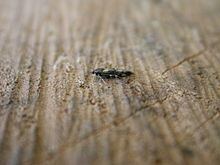Genus Mompha Rank Species | ||
 | ||
Similar Mompha, Mompha langiella, Mompha epilobiella, Mompha sturnipennella, Mompha miscella | ||
Mompha raschkiella is a species of micromoth in the Momphidae family. The moth was discovered by British entomologist Philipp Christoph Zeller in 1838.
Contents
Description
The wingspan is 7–11 millimetres (0.3–0.4 in). Adults are on wing in May and again in August. There are two generations per year. The moth is small and distinctively marked. The species could be confused with Mompha locupletella, but it lacks that species contrasting dark and light patches at the base of the forewing.
Habitat
It species is endemic to Europe. They can be found in waste ground, woodland clearings, heathland, and roadside verges. The moth is rare in Belgium. The moth is common and widely distributed on the Isle of Wight and in southern Hampshire. They can be found in the woods of Northwich. The moth is common in Suffolk, especially in coastal areas and Brecks. The species has been recorded by the St. Helens Wilflife Recording Group as scarce in St. Helens, Merseyside. As of October 2009, the moth has been recorded in 9.6% of Huntingdonshire.
Caterpillars
The oval eggs are laid on the surface of leaves, usually near the midrib. The caterpillars are yellow with a brown head. They have a thoracic plate and an anal plate. The caterpillars feed on the leaves of Epilobium angustifolium (Rosebay Willowherb). The caterpillars mine the leaves of Rosebay Willowherb. They cause a yellowish blotch on the leaves of E. angustifolium that bleach rapidly after the caterpillars leave them. The caterpillars occur in May to late July and late August to September They overwinter as a pupa. Pupation occurs among detritus on the ground.
